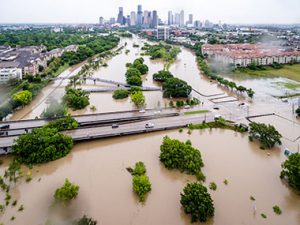 Include our brains. This report about Houston from last year outlines how unchecked development remains a priority in the famously un-zoned city, creating short-term economic gains for some while increasing flood risks for everyone:
Include our brains. This report about Houston from last year outlines how unchecked development remains a priority in the famously un-zoned city, creating short-term economic gains for some while increasing flood risks for everyone:
The area’s history is punctuated by such major back-to-back storms, but many residents say they are becoming more frequent and severe, and scientists agree.
“More people die here than anywhere else from floods,” said Sam Brody, a Texas A&M University at Galveston researcher who specializes in natural hazards mitigation. “More property per capita is lost here. And the problem’s getting worse.”
Why?
Scientists, other experts and federal officials say Houston’s explosive growth is largely to blame. As millions have flocked to the metropolitan area in recent decades, local officials have largely snubbed stricter building regulations, allowing developers to pave over crucial acres of prairie land that once absorbed huge amounts of rainwater. That has led to an excess of floodwater during storms that chokes the city’s vast bayou network, drainage systems and two huge federally owned reservoirs, endangering many nearby homes — including Virginia Hammond’s.
We must learn to do better, but long-term thinking tends to challenge us more than anything.

